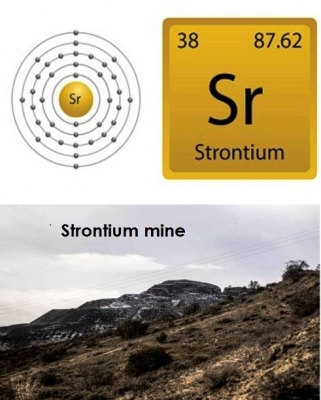
Strontium, atomic number 38, was recognized as a new element in 1790. A mineral sample from a lead mine near Strontian in Scotland (after which the element is named) was analysed by Adair Crawford, leading to this discovery. Until then, the scientific community thought that strontium and barium were the same element. Scientists had only discovered barium’s existence by then. It was initially called strontianite (strontium carbonate). Strontium was first isolated by Sir Humphry Davy in 1808 while working in London. He used electrolysis to isolate it.
Strontium is very common in nature and is the 15th most abundant element in the planet’s crust. Physically, strontium is a soft, silvery metal. It is used to block X-rays emitted by TV picture tubes. It causes paint to glow in the dark and is responsible for the bright red colours in fireworks. Strontium is also vital in understanding the origin of the species as anthropologists study the levels of strontium ions in fossils to determine the geographic origins of ancient humans and animals. The compound strontium chloride is used in toothpaste to help people with sensitive teeth. Strontium oxide also improves the quality of pottery glazes.
Natural strontium is harmless, but one of its isotopes, Sr-90, is a very dangerous by-product of nuclear fallout. The world’s most accurate atomic clock is based on strontium atoms.
Picture Credit : Google




